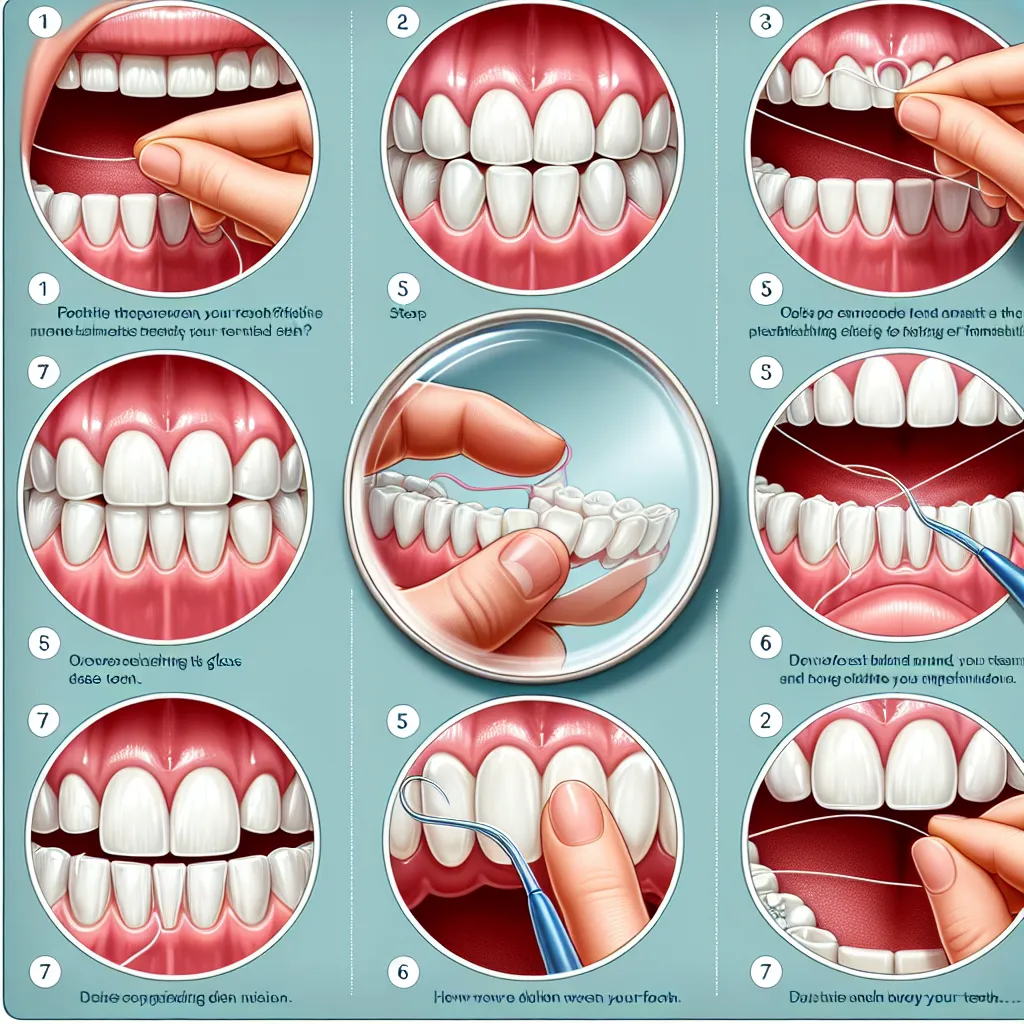
Effective Flossing Techniques for a Cleaner Oral Hygiene
Maintaining good oral hygiene is essential for overall health, and proper flossing plays a crucial role in achieving a cleaner mouth. In this blog post, we will explore effective flossing techniques that can help you improve your oral hygiene. From choosing the right tools to incorporating flossing into your daily routine, we will provide valuable insights to help you achieve a healthier smile.
Proper Flossing Tools and Materials
When it comes to maintaining good oral hygiene, using the proper flossing tools and materials is essential. Let’s explore some of the key items you need to elevate your flossing game and keep your smile sparkling.
1. High-Quality Dental Floss
Investing in high-quality dental floss can make a world of difference in your flossing experience. Opt for floss that is shred-resistant and glides smoothly between your teeth, ensuring a thorough clean without the hassle.
2. Floss Picks
For those who struggle with traditional floss, floss picks can be a game-changer. These handy tools feature a pick at one end and a small strand of floss at the other, making it easier to reach tight spaces and effectively remove plaque and debris.
3. Water Flosser
If you’re looking for a more advanced flossing solution, a water flosser might be the perfect choice for you. Using a targeted stream of water, a water flosser can gently clean between your teeth and along the gumline, promoting gum health and fresher breath.
4. Floss Threader
For those with dental work such as braces, bridges, or implants, a floss threader can simplify the flossing process. By guiding floss through hard-to-reach areas, a floss threader ensures that no space is left uncleaned, helping to prevent cavities and gum disease.
5. Fluoride Mouthwash
After flossing, swishing with fluoride mouthwash can provide an extra layer of protection against tooth decay. Not only does mouthwash freshen your breath, but it also reaches areas that floss may have missed, ensuring comprehensive oral care.
Step-by-Step Flossing Techniques
Flossing is a crucial step in maintaining good oral hygiene. While brushing your teeth is important, flossing helps to reach areas that your toothbrush can’t. Here are some step-by-step flossing techniques to ensure a cleaner and healthier smile:
1. Start with the Right Amount of Floss
Begin by taking about 18 inches of floss and winding most of it around one of your middle fingers. Leave only a small portion (about 1-2 inches) to work with.
2. Hold the Floss Correctly
Hold the floss tightly between your thumbs and index fingers, leaving a couple of inches of floss to work with. Use a gentle rubbing motion to guide the floss between your teeth.
3. Glide the Floss Between Your Teeth
Slide the floss between your teeth gently using a zig-zag motion. Be careful not to snap or force the floss, as this can injure your gums.
4. Curve Around the Tooth
Curve the floss into a C-shape and glide it up and down against the side of each tooth. This helps to remove plaque and debris from the gumline.
5. Use a Fresh Section for Each Tooth
As you move from tooth to tooth, unravel a fresh section of floss to ensure that you are not reintroducing bacteria from one tooth to another.
6. Don’t Forget the Back of Your Last Tooth
Many people neglect to floss the back of their last tooth. Remember to floss behind the last tooth on each side to complete your flossing routine.
Incorporating Flossing into Your Daily Oral Care Routine
When it comes to maintaining good oral hygiene, brushing your teeth twice a day is often not enough. In fact, the key to a cleaner and healthier mouth lies in incorporating flossing into your daily oral care routine. Flossing is like the unsung hero of dental hygiene, reaching where your toothbrush bristles couldn’t dream of going.
1. Understanding the Importance of Flossing
Flossing plays a crucial role in your oral health by removing plaque and food particles stuck between your teeth and along the gum line. It helps prevent gum disease, cavities, and bad breath, making it a vital step in your daily routine. As they say, a clean mouth is a happy mouth!
2. Choosing the Right Floss
With various types of floss available – waxed, unwaxed, Teflon, flavored – choosing the right floss can impact your flossing experience. Experiment with different types to find what works best for your teeth and gums. Remember, the best floss is the one you’ll actually use!
3. Mastering Flossing Techniques
Now, onto the nitty-gritty of flossing – the techniques! Whether you prefer the traditional finger-wrap method or the more modern flossing picks, the key is to be gentle yet thorough. Slide the floss up and down between each tooth, forming a ‘C’ shape to hug the tooth and clean below the gum line.
4. Flossing Frequency and Timing
Experts recommend flossing at least once a day, preferably before bedtime, to rid your mouth of the day’s buildup. However, feel free to floss after meals if something gets stuck or if you want to freshen up. Find a flossing schedule that fits seamlessly into your routine.
5. Overcoming Flossing Challenges
Let’s face it – flossing can be tricky, especially if you’re just starting. But fear not! If traditional flossing feels cumbersome, try floss picks, water flossers, or interdental brushes for an easier experience. The goal is to find a flossing method that you’re comfortable with and one that you’ll stick to.
6. Celebrating Flossing Victories
Lastly, celebrate your flossing victories, no matter how small they may seem. Each time you floss, you’re taking a proactive step towards a healthier smile and fresher breath. So give yourself a pat on the back – your mouth will thank you!